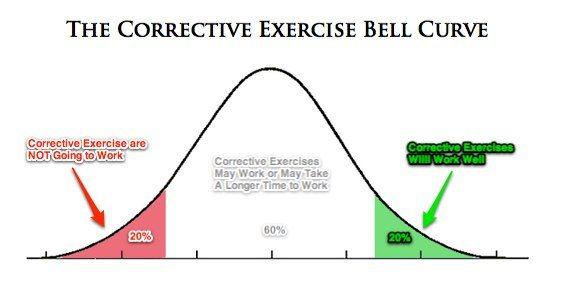We are lucky to feature a guest post from Christie Downing, PT, DPT, cert MDT, ICLM. Christie works at Alexian Brothers Rehabilitation Hospital in Elk Grove Village, IL. She specialize in musculoskeletal care as well as lymphedema management. She is a MDT credentialed provider and student in the Diploma level of MDT, focusing primarily in MDT in both spine and extremity problems.
Predicting Which Patients Will Not Respond to Physical Therapy
Now, I love my profession as much as the next PT, but I think I am realistic when I say that PT cannot fix everyone’s problems. I’ve come to realize that predicting positive outcomes of intervention is only one side of the coin, and that we must also be able to predict who will not respond to physical therapy. Often times, the medical community is not privy to such predictors and focus their attention simply on an imaging study or other medical test.
If you have been followed this blog, you will find my previous post about Mechanical Diagnosis and Therapy (MDT) and its ability to predict annular competence in the lumbar intervertebral disc. In MDT, we often focus on the predictive abilities of centralization in those with a derangement syndrome to indicate GOOD outcomes. This has been shown in several articles, include some of my favorites listed in the below references.1,2,3,4,5
However, a truly great therapist must also recognize when improvement by physical therapy just “isn’t in the cards.”
For those who practice MDT, this includes those with “irreducible derangement” which has specific diagnostic criteria for inclusion in this category. The predictive ability of failure to centralize in the irreducible derangement has exceptionally high predictors of chronic disability.3,6
Werneke and Hart showed this well in a study of 223 subjects with acute low back pain. The authors assessed 23 different psychosocial, clinical, and demographic factors in an attempt to determine predictive values of chronic disability. Of the 23 different variables, the strongest predictive variable to chronic low back pain and disability was noncentralization of pain. This has been shown by Skytte et al as well.
Rapidly Reversible Low Back Pain
I’d like to pause for a moment and briefly discuss Rapidly Reversible Low Back Pain by Ronald Donelson, MD, MS. This was also Mike’s Book of the Week in the past. In this book, Dr. Donelson critically examines our current state of diagnostic triage of those with low back pain. He takes a painfully realistic look at current practices and investigations among both the medical and allied health professions and highlights their shortcomings. Dr. Donelson has invested much time in investigating conservative care of low back pain and has taken a particular interest in MDT. So why does an orthopedic spine surgeon want anything to do with conservative care of low back pain? Well, you’ll have to read his book to understand the story about how he became acquainted with Greg Silva, PT, Dip. MDT. In my opinion, Dr. Donelson, in both his book and research,7 eludes to the notion that MDT clinicians have been able to help HIM better select patients for surgical intervention.
Imagine that, WE, as PTs, having valuable input as to the need for further intervention!
Very little frustrates me more than when I feel that a patient will not benefit from further PT only to have the physician continually refer a patient back to physical therapy for the same pointless interventions. Surely, not everyone can be a Dr. Donelson. However, how ready is the medical community to hear our messages?
Does this happen to you and what resistance have you faced when you predict a poor outcome? Furthermore, what other pieces of evidence do we have that demonstrate strong predictive abilities for poor outcomes? If anyone has predictors for poor outcomes of meniscal derangement and any other pathology, I would be particularly interested.
Note from Mike Reinold: Rapidly Reversible Low Back Pain is a great book that is highly recommended for those interested treating low back pain. I was amazed at how simple, yet highly effective, the concepts are that are outlined in the book. Definitely one of the best reads for treating low back pain for under $20! Click here for more information or to purchase from Amazon.com. Thanks Christie, great post! If you are interested in guest writing for this website, please contact me.
References:
- Aina A, May S, Clare H; The centralization phenomenon of spinal symptoms – a systematic review Man Ther; Aug;9(3):134-143, 2004.
- Donelson R, Silva G, Murphy K.; Centralization phenomenon. Its usefulness in evaluating and treating referred pain. Spine; Mar;15(3):211-3, 1990.
- Skytte L, May S, Petersen P; Centralization: Its prognostic value in patients with referred symptoms and sciatica Spine; 30:E293-E299, 2005.
- Werneke M, Hart DL, Cook D; A descriptive study of the centralization phenomenon. A prospective analysis. Spine; Apr 1;24(7):676-83, 1999.
- Werneke M, Hart DL, Resnik L, Stratford PW, Reyes A; Centralization: prevalence and effect on treatment outcomes using a standardized operational definition and measurement method. J Orthop Sports Phys Ther; 38:116-125, 2008.
- Werneke M, Hart DL.; Centralization phenomenon as a prognostic factor for chronic low back pain and disability. Spine; Apr 1;26(7):758-65 , 2001.
- Wetzel T, Donelson R, : The role of repeated end-range/pain response assessment in the management of symptomatic lumbar discs. The Spine Journal; (3): 146-54, 2003.
Werneke M, Hart DL (2001). Centralization Phenomenon as a Prognostic Factor for Chronic Low Back Pain and Disability Spine, 26 (7), 758-764
Sign up for my FREE newsletter for even more great content!





